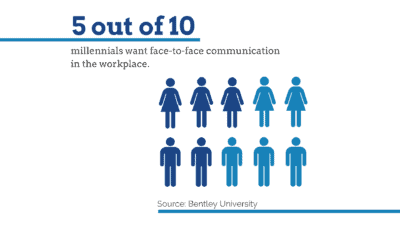7 Powerful B2B Sales Strategies

Selling to companies is quite different than selling to individual customers. B2B sales tend to be larger in volume and more financially driven. As a result, this business model calls for specific B2B sales strategies, skill sets and a highly customized sales approach.
So, what are the key sales drivers for a successful B2B business?
7 of the best B2B sales strategies that can change your business
The strategies you choose to apply in your sales processes can dramatically change your business performance. Let’s take a look at some powerful B2B sales strategies.

1. Identify target companies
Granted, you need a lot of prospects to successfully implement your sales strategy, but you do need to choose your target audience. Attempting to sell your product to everybody without a clear vision of who’s likely to benefit from your offer won’t yield results.
Carefully consider which companies would fit best into your ideal customer profile. Companies of different sizes have their own specifics and this can greatly affect your business outcome.
For instance, large enterprises can bring you a lot of revenue and put you on the map if your product is good. However, it takes time and effort to close these deals. Sale cycles are long (6 months to 1,5 years) and many decision makers are involved. Once you close the deal, you have to be ready to deliver great service in terms of people and equipment. Otherwise, you may jeopardize your company’s survival.
As for small businesses, the prospect pool is huge and you can experiment to see which sales tactic works best. Deals are closed a lot faster due to the smaller number of stakeholders. Also, small companies are much more likely to give you referrals and spread the word if they’re satisfied with your product. On the downside, deal sizes are smaller and you don’t gain the recognition and credibility that come from being associated with a large enterprise.
2. Research is important
To devise a good sales strategy, you have to know your business industry in detail. This includes knowing how your offer can solve issues your potential customers may have. Equally important, you have to know what your competition is doing, so you can explain why your product is better and how it can provide more value.
Market research is a powerful sales booster. Use it to define your target market segment and audience, gain insight into what drives the demand for your product, why your clients choose your competitor and to define your goals in terms of business growth.
Quality market research will also help you analyze your (and your competitor’s) strengths, weak points, opportunities, as well as challenges that should be tackled. Make sure your research includes possible market shifts or emerging trends so you’ll be prepared to respond.

3. Find the right approach
The quality and price of your product are undeniably key customer attractors, but so is your attitude. When it comes to making a sale, a proper relationship between your sales reps and your prospects is essential.
Prospects want to be approached with just the right amount of enthusiasm and persistence. They should be intrigued but not overwhelmed. Sales reps must know how to present the product in a clear and appealing way, while actively listening and acknowledging the prospect’s views.
It’s also important that you approach the right person within a company. Namely, a person’s job title or hierarchical position isn’t necessarily crucial. If your product is designed for accounting, the chief executive officer shouldn’t be your first choice of contact. Instead, approach the decision maker involved in the issues your product can address.
Also, don’t forget you’re dealing with people, not business entities. Decision makers have interests, doubts and preferences, and you should take the time to find out what they are. In a word, learn to speak their language.
4. Make your presence known
In today’s competitive business world, simply having online presence is not enough. Achieving social visibility requires a fair amount of engagement on your part.
Finding ways to boost your social reach is key to effective lead generation and prospect – customer conversion. Making it easy for people to find your business online is essential. Your content should be informative, attractive and neatly arranged so people can easily find the information they want.
As a method of direct customer communication, emails are an affordable way to increase your visibility and reach your audience. You can easily customize the content to appeal to specific target groups.
Check which social platforms your potential customers visit frequently so you’ll know where to focus your sales efforts. Set up profiles on all major networks. To know if your efforts are yielding results, use relevant sales metrics to measure your performance and fine tune your strategies.

5. Know what to ask and say
This is very important when it comes to qualifying leads, engaging prospects and ultimately closing a sale. Lead qualification involves the ability to assess a person’s interest in your product. This prevents you from allocating time and resources to leads that are unlikely to convert.
Ask insightful questions to learn about people’s needs and motivations, rather than just tell them what you think they’d like to hear. Practice active listening to get valuable information that can help you close the deal. All people are different and a good salesperson has to know how to approach and sell to different personality types – or company types for that matter.
To qualify your prospects properly, consider the following:
a) if the company fits your target customer profile (size, purchase process, sales cycle),
b) if your product can solve their problems and meet their needs,
c) what their decision-making process is (number of decision makers/departments involved, time to make a decision).
6. Ooze trust and confidence
It’s much easier to assure people they’re making the right choice if you speak and act with confidence and professionalism. Aim for expert knowledge when it comes to your products. It will help you develop a strong self-image and radiate knowledge and professionalism.
Of course, it also helps if you really believe your product is valuable and that it can make a difference in their business by delivering tangible benefits.

7. Secure referrals
In addition to online visibility, use traditional networking to promote your product. This includes securing referrals from your business colleagues and existing customers. Referral introductions from people your prospective customers know and trust can facilitate the pitch process and help you close deals faster. Use every chance to network (conversations, industry events, social and professional networks) as a way of promoting your brand.
Demand generation is what we, at Demandzen, do best. We skillfully design all our services and solutions to drive awareness and increase people’s interest in your products or services. We support your business growth by generating a flow of highly-qualified initial meetings through a combination of inside sales and digital marketing strategies.
Our mix of experience, effective tools, and a multi-channel approach is guaranteed to multiply your sale opportunities and expand your revenue potential.
Get in contact with us. We’d love to chat about the B2B sales strategies and tactics you’re using.
You Might Also Enjoy These Posts
Managing a Remote Sales Team: The Importance of Face Time
Become a better salesman: 5 tips to improve your performance
Welcome To DemandZEN
DemandZEN specializes in Account-Based Demand Generation and solving the challenges around finding, engaging and converting target accounts into real opportunities for B2B Technology and Services companies.


